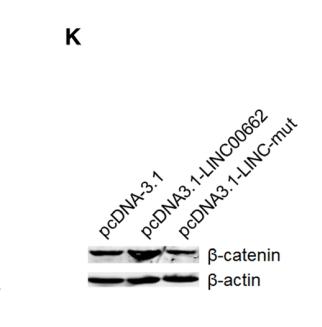产品描述
*The optimal dilutions should be determined by the end user. For optimal experimental results, antibody reuse is not recommended.
*Tips:
WB: 适用于变性蛋白样本的免疫印迹检测. IHC: 适用于组织样本的石蜡(IHC-p)或冰冻(IHC-f)切片样本的免疫组化/荧光检测. IF/ICC: 适用于细胞样本的荧光检测. ELISA(peptide): 适用于抗原肽的ELISA检测.
引用格式: Affinity Biosciences Cat# DF4806, RRID:AB_2837099.
展开/折叠
CD107 antigen like family member A; CD107 antigen-like family member A; CD107a; CD107a antigen; LAMP 1; LAMP-1; LAMP1; LAMP1_HUMAN; LAMPA; LGP120; lgpA; Lysosomal membrane glycoprotein 120KD; Lysosomal Associated Membrane Protein 1; Lysosome associated membrane glycoprotein 1; Lysosome-associated membrane glycoprotein 1; Lysosome-associated membrane protein 1; OTTHUMP00000040663;
抗原和靶标
A synthesized peptide derived from human LAMP1, corresponding to a region within the internal amino acids.
研究领域
· Cellular Processes > Transport and catabolism > Autophagy - animal. (View pathway)
· Cellular Processes > Transport and catabolism > Lysosome. (View pathway)
· Cellular Processes > Transport and catabolism > Phagosome. (View pathway)
· Human Diseases > Infectious diseases: Bacterial > Tuberculosis.
文献引用
Application: WB Species: human Sample: SW480 cells
Application: WB Species: Human Sample: HepG2 cells
限制条款
产品的规格、报价、验证数据请以官网为准,官网链接:www.affbiotech.com | www.affbiotech.cn(简体中文)| www.affbiotech.jp(日本語)产品的数据信息为Affinity所有,未经授权不得收集Affinity官网数据或资料用于商业用途,对抄袭产品数据的行为我们将保留诉诸法律的权利。
产品相关数据会因产品批次、产品检测情况随时调整,如您已订购该产品,请以订购时随货说明书为准,否则请以官网内容为准,官网内容有改动时恕不另行通知。
Affinity保证所销售产品均经过严格质量检测。如您购买的商品在规定时间内出现问题需要售后时,请您在Affinity官方渠道提交售后申请。产品仅供科学研究使用。不用于诊断和治疗。
产品未经授权不得转售。
Affinity Biosciences将不会对在使用我们的产品时可能发生的专利侵权或其他侵权行为负责。Affinity Biosciences, Affinity Biosciences标志和所有其他商标所有权归Affinity Biosciences LTD.






![Figure 1: ATP7B distribution at the TGN and endolysosomes in different copper treatments. (A) Immunofluorescence image of ATP7B (green) in HepG2 cell-co-stained with endolysosomal marker LAMP2 (red) and TGN marker TGN46 (blue) shows presence of ATP7B on both compartments, irrespective of cellular copper condition i.e., basal, high copper (100µM Cu) as well as copper chelated conditions (100µM BCS). The marked area on ‘merge’ panel is enlarged in ‘inset’. The arrowhead shows colocalization between ATP7B21 LAMP2, the asterisk shows colocalization between ATP7B-TGN46. (B) Pearson’s Colocalization Coefficient (PCC) between ATP7B-TGN46 and ATP7B-LAMP2 in different copper conditions are demonstrated by box plot with jitter points. The black * depicts the comparison of colocalization between ATP7B-TGN46 and ATP7B-LAMP2. The green * shows the comparison of ATP7B-TGN46 colocalization under different copper conditions w.r.t. basal condition. The orange * shows the comparison of ATP7B-LAMP2 colocalization under different copper conditions w.r.t. basal condition. (C) Cumulative fraction of ATP7B on TGN46 and LAMP2 positive compartment are demonstrated by box plot with jitter points. The statistical comparison is done w.r.t. Basal. Sample size (N) for (B) and (C) are TTM: 42, BCS: 57, Basal: 24, Cu20: 44, Cu100: 49, Cu250: 50. (D) comparison of copper accumulation in HepG2 cells (n = 9) under different treatment conditions shows elevated copper accumulation in case of increased copper treatment, copper concentrations were measured in parts per billion (ppb). Data is demonstrated as bar-plot (mean ± SD). Statistical comparison is done w.r.t basal. (E) Comparison of copper accumulation in HepG2 cells (n = 9) under prolong copper chelated conditions (12h as well as 72h chronic chelation using BCS) shows decreased copper accumulation. Copper concentrations were measured in parts per billion (ppb). Data is demonstrated as bar-plot (mean ± SD). (F) Immunofluorescence image of ATP7B (green) in HepG2 cell line co-stained with endolysosomal marker LAMP2 (red) and TGN marker TGN46 (blue) shows presence of ATP7B on both the compartments even under chronic copper chelated condition. The marked area on ‘merge’ panel is enlarged in ‘inset’. The arrowhead shows colocalization between ATP7B-LAMP2, the asterisk shows colocalization between ATP7B-TGN46. (G) Immunofluorescenc image of ATP7B (green) co-stained with LAMP2 (red) in mouse tissue shows presence of ATP7B on LAMP2 positive compartment (marked by arrowhead). (H) Immuno-EM of endogenous ATP7B in HepG2 cell show presence of ATP7B at the Golgi membrane (marked by arrow) as well as late-endosome/lysosome compartmen (marked by arrowhead) both in BCS treated (left panel) and basal (right panel) conditions. (I) Immunoblot of ATP7B, lysosomal marker LAMP2, TGN marker GGA2 and TGN46, early endosome marker EEA1 and late endosome marker Rab7 of the top 8 fractions of sucrose gradient shows presence of ATP7B on TGN and lysosome enriched fraction. The line plot shows abundance of ATP7B (green), GGA2 (orange) and LAMP2 (violet) in 8 fractions of sucrose gradient. The ribbon plot signifies the standard deviation of 4 independent experiments. [scale bar for EM: 100 nm, for immunofluorescence: 5µm] LAMP1 Antibody - Figure 1: ATP7B distribution at the TGN and endolysosomes in different copper treatments.](http://img.affbiotech.cn/uploads/202312/78c7f4f1d99bf2f63b95ec473e26434f.png)